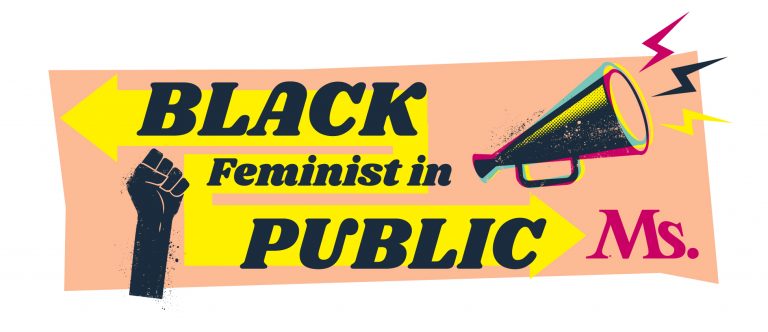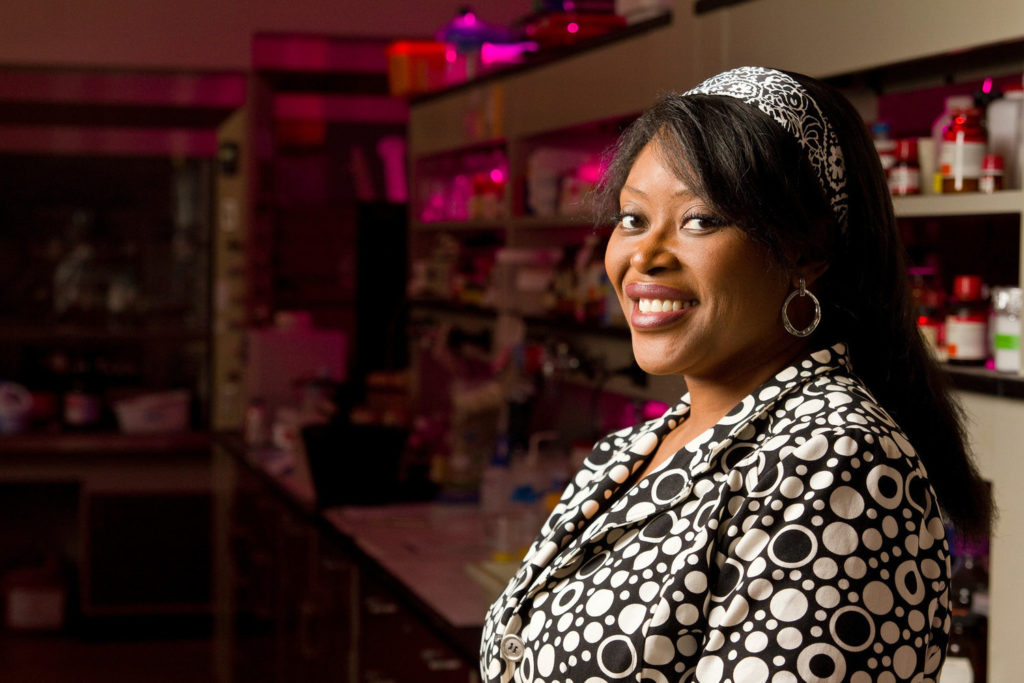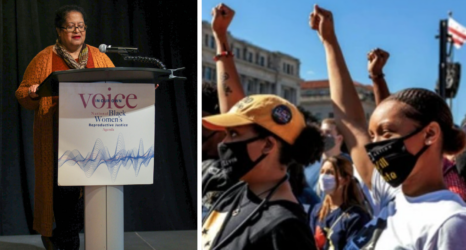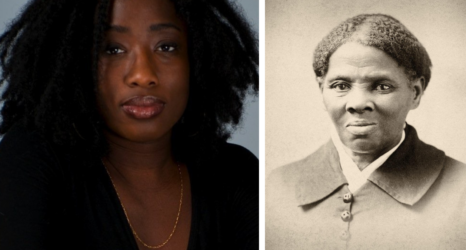
Black Feminist in Public is a series of conversations between creative Black women and Janell Hobson, a Ms. scholar whose work focuses on the intersections of history, popular culture and representations of women of African descent.
This is part one in a two-part edition of Black Feminist in Public featuring Black feminist scientists.
University at Albany chemistry professor Rabi A. Musah was born in the United States, to an African American mother and Ghanaian father, and raised in Ghana. She returned to the U.S. to pursue chemistry, ultimately receiving her Ph.D. at the University of Arkansas.
One of the myriad projects emerging from Musah’s research lab at Albany is the globally ambitious condom database that she’s compiling—with the intent to confront the rape kit backlog. She sat down with me, a fellow scholar at Albany, to discuss that project—and why there remains so few Black women scholars in STEM.

How did you come to do work on the condom database?
I just personally feel that although there are many types of crimes, one of the absolute worst crimes is to rape somebody. Anything that can be done to promote justice I think is important. Rape is the kind of crime where double and triple violation has to occur to get justice, because you do need to be examined [to collect evidence for rape kits]. You need to tell your story.
You need to go through all that, and I don’t yet know of a way to get around that, and yet, you’re being assaulted with the credibility question. Are you or aren’t you credible? What is the corroborating evidence for this?
We want to do all we can do to help support a victim’s story. With the advent of more and more rapists using condoms to avoid leaving behind incriminating DNA evidence, the question is: What is the trace evidence that’s left behind by a condom, and how can it be used?
Strangely enough, no one had put together, to our knowledge, a database of something that you could get at any gas station, at any grocery store where there’s a condom aisle; and yet the chemical profile of the condoms that would tell you what the condom was, what brand it was, no one had compiled that. So I thought: Let’s compile it. If we compile it, it can be used.
So you just started collecting condoms for a database?
Yes. There’s technology we’re using today that wasn’t available 20 years ago that enables us to access chemical profiles easily. In this particular case, the chemical profiles are condoms, so that is direct analysis in real time, high resolution mass spectrometry, or HRMS, and it’s the advent of that technique that enables us to be able to get at this information quickly enough to put together a robust database that actually can be used by crime scene investigators.
Hypothetically, how do you see a prosecutor being able to use your database?
The way you would collect the trace evidence is through the use of the rape test kit—because unlike many crimes, the crime scene in the case of a rape victim is her or his body. That’s the scene, and so the question is: Is there condom residue? Is there condom lubricant residue that is left behind?
When you collect, for example, a vaginal swab or an anal swab from the victim and you do a chemical analysis of that, you can learn from the chemical profile what the compounds are that are present, and then you can match that against the fingerprint signatures that are in the database that we built to reveal the brand of the condom—is it a Trojan?—or even if it has specific qualities—is it chocolate-flavored?
Could such a database potentially work against a victim?
I can’t envision a way in which the database we’re creating would negatively impact a rape victim. There are many cases where victims won’t even come forward because there was no DNA evidence. I personally feel this database could be extremely powerful; it just simply hasn’t been tested.
The lubricants that are used on condoms are formulaic. Each condom manufacturer has its proprietary formula, and there are molecules that are unique to the different formulations. Based on that, you can learn a lot, and if we could just put that out there and allow it to be used in testing, I think we’ll find that it will be very helpful in these cases where there’s no DNA. This would be especially helpful when tracking perpetrators in human trafficking rings. The next step of course is funding for this project.
Do you view this work as feminist?
Absolutely! Since I was a child, I have always wanted to change the world. I could’ve gone into social work and help rape victims. I could’ve done that, and we need those people, but that’s not in my wheelhouse. If I think about what is in my wheelhouse, and I couple that with my desire to change planet Earth, then the question is: Can that be my mode of feminist intervention? How do I take science and by solving a problem in science, address a problem that disproportionately affects women all over planet Earth? That’s my feminist agenda.
Why did you choose to become a chemist?
When I was growing up, I was fascinated by the fact that when a lot of people in Ghana needed medical treatment, they sought guidance from herbalists. I was fascinated that people could use plant-based materials and ingest them after they were prepared in this way or that way and be cured. When we would come to the United States, you would go to a hospital or a clinic and you would get these nice little pills, so both methods seemed to work.
I became very interested in trying to figure out what the molecules were that are in plants that are responsible for the therapeutic effect that people were clearly benefiting from in places like Ghana and other parts of sub-Saharan Africa where a lot of people rely on herbalists, and I also was interested in bridging the gap between that type of science—the kind of science that is practiced in many indigenous societies that leverage the knowledge and input of traditional healers—and that which is discovered in more westernized societies. I wanted to connect the dots, so to speak.
Why do you think there are so few Black women chemists in the U.S.?
I think there are multiple reasons for that.
This is a male-dominated field. We know the social science literature tells us that children, boys and girls start off with the same level of interest in science, and then by the time they get to middle school or thereabouts, you start to see a gender gap in terms of interest in STEM, and there’s evidence that shows that it’s not so much interest as it is discouragement. Girls, often not overtly, are discouraged from pursuing careers in science, technology, engineering and math—STEM fields.
Then you have the added element that chemistry is a difficult subject. Students don’t have pleasant experiences in chemistry classes, and often when they’re taught chemistry, it’s not related to anything they know, which is unfortunate because chemistry is everywhere. To me, it’s a simple and easy thing to connect chemistry to everyday life, and yet for many students, that’s not the experience they have in terms of their introduction to the subject.
Then at the college level, when you decide to take on chemistry as a major, the classes that you need to take to actually graduate in that major are often some of the most difficult STEM courses you have to take. You practically have to minor in math, and we’re talking high-level math. Historically, these are all subject areas where, by and large, girls and women have not been encouraged, even when they’ve been interested in studying in those areas.
How were you able to overcome such discouragement?
In my case, I grew up in Ghana. I really didn’t have to confront the level of systematic discouragement that is often received by girls and women here in this country. That’s not to say that Africa as a continent is encouraging of women in science, but you certainly are not dealing in that society with being discouraged because you’re Black; because everybody’s Black, right? I was also raised in a way where my gender was not perceived to be an issue.
In Ghana, by and large, the schools I went to, the people I was around, we didn’t have those issues, so it didn’t dawn on me that, “Oh, you’re Black, so you can’t be a scientist.” So I think, to get back to your question, that the reason why there aren’t more women in science and Black women in particular is because of systematic discouragement.
How would you make the case for more Black women to actually consider chemistry, and how would you interest them?
Chemistry is wonderful because it gives you a tremendous amount of power. Science advances because people are curious about something in nature, and they want to figure out what it is and why it’s happening. The investigation of that for the sake of investigating can often lead to major discoveries.
Do you have a concrete example of this?
So there is a plant called mimosa pudica, and it’s also called the “shy plant.” That’s because when you touch the leaves, they close. When I was a kid growing up in Ghana, I would actually see this weed growing along the roadside. It was a fun plant—and even here, you can go to greenhouses and places where people will buy the plant and display it to school children so that they could play with it. However, if you pull the plant out of the ground, it emits this absolutely foul stench. I was always interested in what it was about the plant that resulted in this smell.
So fast-forward: I’m a grownup now. I have my own research lab. This is where that power that I was referencing comes in. I have all the equipment I need to figure out why this plant smells so badly when you pull it out of the ground. So I grew some seedlings, and I wanted to be sure that the smell was not a consequence of bacteria that were growing on the roots. However, if you tap the plant with your finger or with something else that’s living, it sprays this smell at you like a defense mechanism. Lo and behold, I found out that not only does this plant emit these chemicals, which contained sulfur when you touch it, it actually pumped out large amounts of sulfur into the atmosphere. Now I’m doing a research project in Australia that has the largest population of plants in that family, where we’re looking to see how much of these compounds are being emitted into the atmosphere and what impact is that having on the climate. Whereas before, it was perceived that sulfur in the environment comes from volcanoes, mining, wear and tear from tires on the ground, and the oceans, for example, it looks like plants may be making a very significant contribution, and now we get to explore that.
That discovery started with a little child in Africa playing with a plant by the roadside that had a bad stench under the ground. That could affect how we will maybe ultimately perceive the contribution that plants make to the environmental sulfur burden.
I like that connection you make, of the little girl in Africa making an impact on the study of our climate.
The science you do is informed by the experiences you’ve had. If you don’t have those experiences, that’s not the science you would explore. So, it behooves us to include everybody and to encourage everybody so that we can benefit all of humanity.
It’s one of my missions in life, just by virtue of my own experience, to reverse the systematic discouragement of young women and girls in STEM classrooms.





